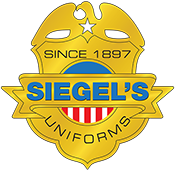Personal Concealable body armor has transformed throughout the last three decades. On average, in the United States, ninety officers a year have been saved with this particular type of lightweight armor over that time. As premium safety equipment becomes affordable and more effective, Law Enforcement Officers appreciate the comfortable yet heavy-duty protection the new lines in concealable body armor offer.
When a bullet collides with a section of body armor, the strands take in and diffuse the force of the impact across a widespread area. Most concealable body armor is made of multiple layers. These seams assist in the force diffusion procedure and help to diminish any damages resulting from the blunt trauma brought about by the force of impact energy that is delivered by an object or bullet.
The fiber technology is the variable essence of body armor. The fiber content of superior concealed, lightweight body armor can vary greatly and functions to serve different expectations. Each fiber has its own advantages and disadvantages. The construction of the body armor, including type or types of textiles and the quantity of layers of each type of fabrics and material used, even the interweaving of the fibers will impact the functioning of concealable body armor.
Advances in material science have opened the door to the idea of a literal “bulletproof vest” able to stop handgun and rifle bullets with a soft textile vest, without the assistance of additional metal or ceramic plating. However, progress is moving at a slower rate compared to other technical disciplines. The most recent offering from Kevlar, Protera, was released in 1996. Current soft body armor can stop most handgun rounds (which has been the case for roughly 15 years, but armor plates are needed to stop rifle rounds and steel core handgun rounds such as 7.62×25.
Investigating body armor in the protection level you desire is important. When you narrow your choice to several vests, refer to NLECTC for the test data. NLECTC is the National Law Enforcement and Corrections Technology Center. It is a program of the National Institute of Justice (NIJ) created to support local law enforcemen. NLECTC tests body armor from many manufacturers to verify their products meet minimum performance standards necessary for police use. The test does not compare one manufacturer or their products with another. Looking at armor from a number of manufacturers, carefully determining first, your defense needs, and secondly, the ranges of prices within that area.


